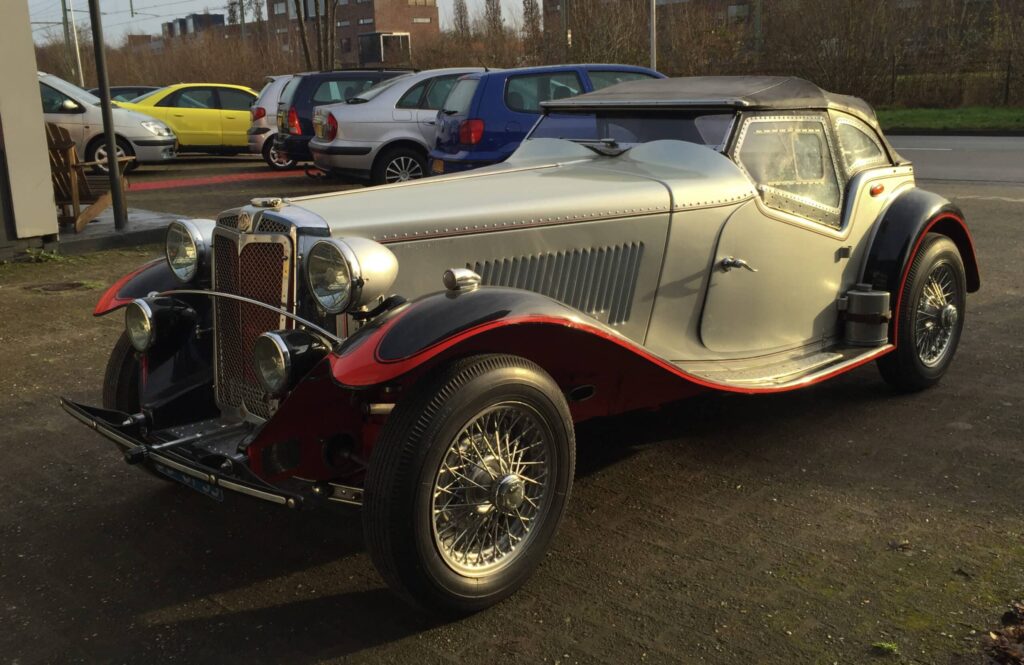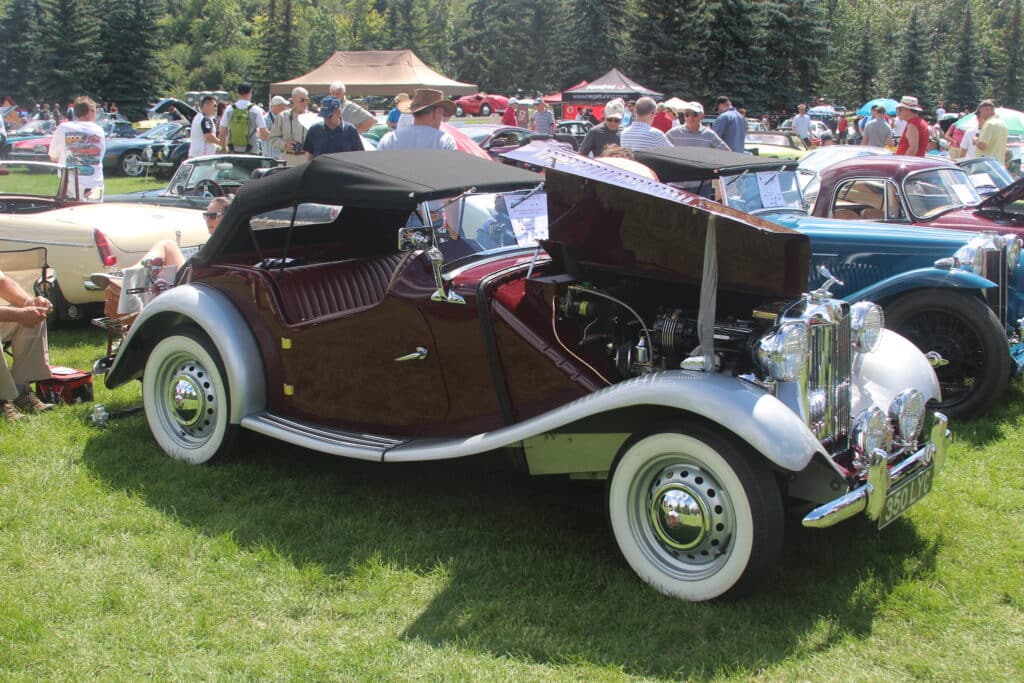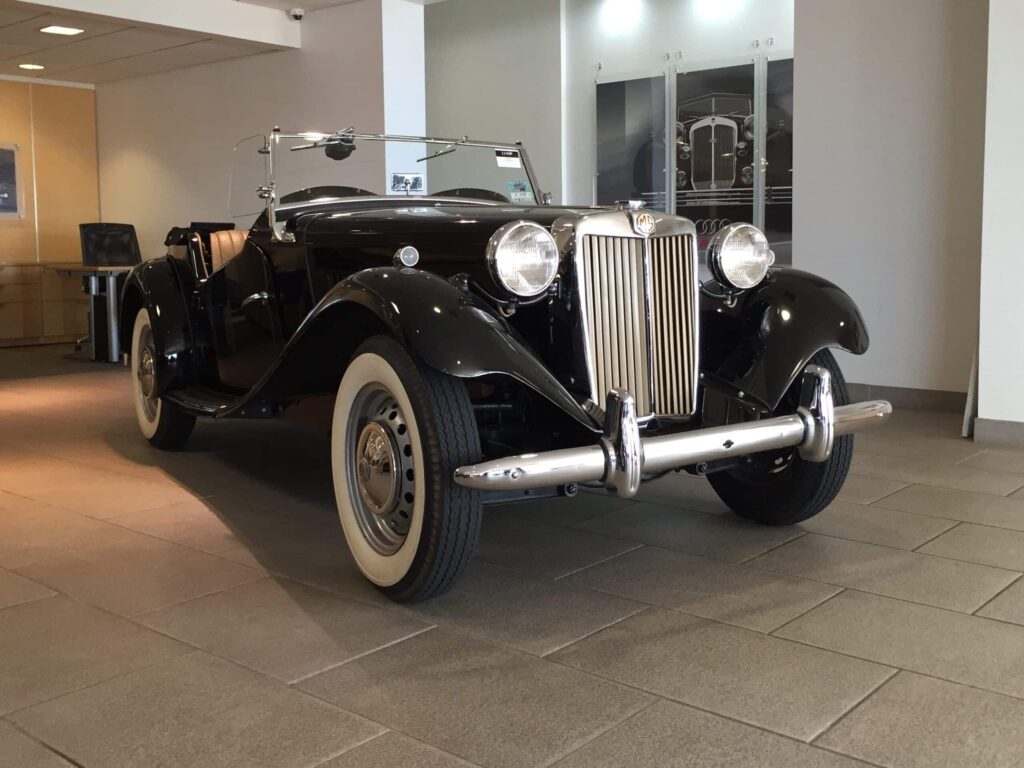Over the past few decades, British car makers have brought us a range of game-changing vehicles. These were cars like a revolutionary Mini or a hugely popular Ford Cortina, whose impact on the automotive industry was immense. But many British manufacturers became best-known for their sporty, agile roadsters, a segment they’ve mastered and turned into perfection. The arm-long list of successful models is full of iconic names, and it is impossible to single out just some of them. Still, some of these cars had a more significant impact than the others, with MG TD being one such vehicle. And in this article, we will explore this roadster and see why this is so.
What is a roadster?
The roadster as a concept can trace its roots to the beginnings of the 20th century when motorsports started catching on. Like today, options for making a car faster have included adding power to the engine and shedding some weight. Back then, all vehicles had a body-on-frame chassis, and most owners would just remove all the body panels. The resulting cars, which had only the seats and the mechanical underpinnings, soon became known as speedsters. As these homemade racers quickly became popular, manufacturers started offering ready-built models for such purposes.
But as the number of vehicles in traffic increased in the following years, governments started imposing various safety requirements on them. The most important for this story was the need for having things like fenders or a hood. So, to keep roadsters road-legal, manufacturers and owners fitted them back with some of the body panels. But to keep the weight down, they installed only the essential things mandated by the law. This consequently gave birth to an entirely new breed of cars – the roadsters. In simple words, these are sporty, lightweight 2-seaters with a minimum of equipment. And even today, the definition of a roadster is literally the same.
The MG TD – how it looks
The TD is the fourth generation in the successful T-type lineup. This series of roadsters, made in the first half of the 20th century, helped the MG brand to become hugely famous. It all started with the model called TA Midget, which was introduced in 1936. This car was replaced by an improved and updated TB model and, consequently, the TC. The latter one was, in actuality, MG’s first post-war model.

The MG TD was first revealed in late 1949, as a 1950 model, with an overall shape strongly resembling its predecessors. When the new model is parked next to the TC model it replaced, it is easy to spot all the similarities between them. This included anything from a vertical radiator grille and sloping fenders to angled suicide doors. But when compared to the outgoing car, it was evident the new MG TD grew in size. Some customers feared that the increase in length and width might affect the performance and road handling.
On the inside, the TD had a leather-covered bench and a large steering wheel made from steel and wood. Following the lightweight roadster recipe, the car had no unnecessary features. Some of this sparseness, such as a lack of temperature or fuel gauge, annoyed some owners. Still, it had a rev counter on its dashboard, an instrument that was very rare at that time. This was, of course, because the engine speed is the most vital information for the driver of a sporty car. And like all other roadsters, MG TD offered only modest weather protection, which came in the form of a detachable canvas soft-top roof.
The mechanics behind the MG TD
While the TD looked similar to the TC model it replaced, these were two completely different cars underneath the skin. In essence, the new car was based on the chassis of the MG Y-type 4-door saloon. This was a newly developed model, which offered a range of technical innovations and improvements. For a start, it had an independent front suspension with coil springs instead of a live axle. In addition, a traditional steering box gave way to a rack-and-pinion system, which made turning much sharper. All these improvements had a significant impact on the way how the car drove on the road. Judged by initial testings and feedback from first customers, it offered a far better ride quality and overall handling than its predecessors. And, in essence, that is what the roadster is all about.

Other mechanic parts the TD borrowed from its 4-door cousins are the 1.25-liter XPAG engine and a 4-speed transmission. The engines were available in two variants, with the standard one having a power output of 46 horsepower. There was also a high-tuned version, which developed 57 horsepower, although this one was not available in the UK. As these are, by no means, breathtaking numbers, the TD’s performance wasn’t blistering. For instance, its top speed was 74 mph, and the 0-60 time would take almost 20 seconds. Still, thanks to advanced steering and suspension, the driver could carry a lot of speed into the bends. Because of that, the MG TD could be faster on a twisty road than much more powerful cars.
Why did roadsters like the MG TD become so popular?
During the late 40s, the whole of Europe was still recovering from a lengthy and excruciating war. The situation was especially tough in the UK, where rations affected the availability of many essentials, including fuel and raw materials. Because of that, automotive manufacturers couldn’t afford to design and build new purpose-built models from scratch. This left the roadster as the only form of such vehicle that was viable and feasible. Even before the war, these sporty cars were usually made using the chassis and mechanics from other high-volume production models. This lowered the development time and production costs, which was ideal for the cahs-starved automotive market after the war.

As a result, almost every car builder had at least one such model in their lineup during that period. And over the years, they would try to make these cars even more competitive by improving what they could. This usually included fitting different carburetors, tweaking the suspension, and upgrading the brakes. With time, British engineers mastered this craft so well that the cars they were making became the synonym for a perfectly-balanced roadster. Over the next few decades, roadsters built by the UK car manufacturers, including the MG, dominated this automotive segment. But by the early 80s, the sales of these vehicles dropped significantly, and most car builders started killing off their classic roadsters. At that point, it just seemed their time was over. But it didn’t take long for this to prove wrong when Mazda introduced their legendary Miata. Still, that’s a whole different story.
How much does an MG TD cost today?
The TD was one of MG’s most successful models up to date, with total production numbers reaching almost 30,000. Most of these vehicles ended up in the North American market, where they were praised for their agility and fun-to-drive experience. And thanks to robust mechanics and simple bodywork, many of them are still around. At any given moment, it is possible to find a couple of dozen MG TDs on sale. As with any other model, prices will differ depending on the vehicle’s history and general condition. This ranges from less than $3,000 for cars that need restoration to over $50,000 for those in pristine condition. But on average, a well-kept MG TD costs between $10,000 and $20,000.
A short brief about the MG TD
The MG TD was a British-built roadster made between 1950 and 1953. This was the fourth and penultimate iteration of their popular range of T-type cars. Although having a design similar to its predecessors, the TD also offered a range of technical innovations. The new car was competitive and exciting to drive, which ensured its popularity among drivers. As a result, almost 30,000 MG TD roadsters found their way to future buyers.





